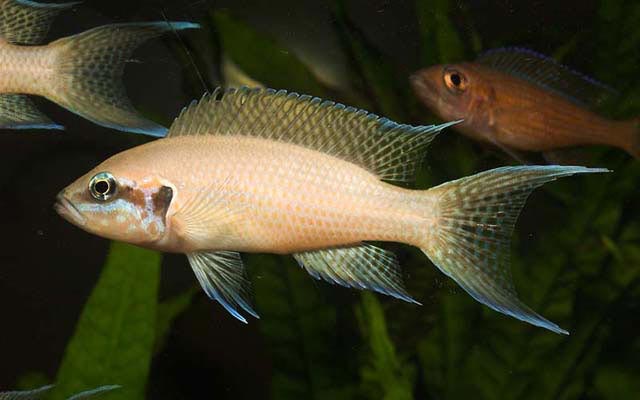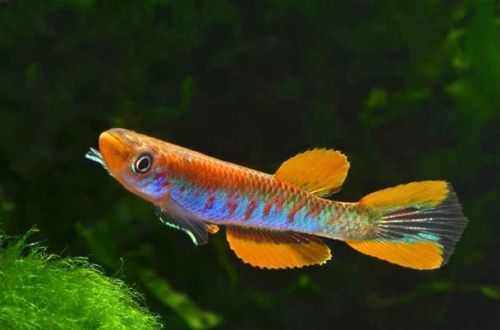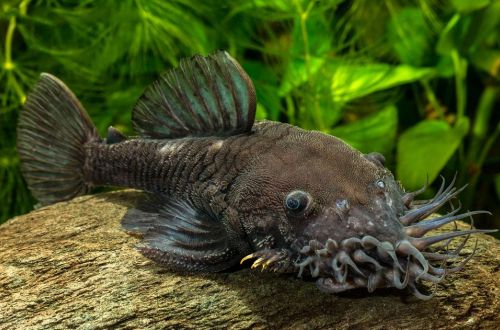
cichlid princess
The princess cichlid, scientific name Neolamprologus brichardi, belongs to the Cichlidae family. Endemic to Lake Tanganyika in East Africa, found along the southwestern coast among rocky substrates. Modest size and rather peaceful disposition allow it to be kept in common aquariums together with other fish of similar size and temperament.
Contents
Description
Adult individuals reach a length of 5–6 cm. The color of the body is light with light dark pigmentation. A characteristic feature of the species is an elongated tail, shaped like a lyre. Sexual dimorphism is weakly expressed, it is problematic to distinguish a male from a female.

Brief information:
- The volume of the aquarium – from 70 liters.
- Temperature – 23-27°C
- Value pH — 7.5–9.0
- Water hardness – medium to high hardness (10-25 dGH)
- Substrate type – sand or gravel
- Lighting – subdued / moderate
- Brackish water – no
- Water movement is weak
- The size of the fish is 5–6 cm.
- Nutrition – high-protein feed with herbal supplements
- Temperament – conditionally peaceful, with the exception of spawning periods
- Content – can be contained in groups or in pairs
Food
The basis of the diet should be meat products, such as bloodworms and brine shrimp, live or frozen. Serve vegetable flakes as an accompaniment. For a balanced diet, you should give preference to specialized feeds from well-known manufacturers with a high protein content.
Maintenance and care, arrangement of the aquarium
One pair of fish can be content with a tank of 70 liters. The design uses a sandy substrate and heaps of stones and / or rocks, from which caves, crevices and other shelters are formed. There is no need for living plants.
Successful keeping of Princess Cichlid is possible in conditions of very clean water and high hydrochemical values of pH and GH. To maintain the proper quality of water, in addition to its weekly replacement (20–25% of the volume), it will be necessary to install a productive filtration system, as well as regularly clean the soil from organic waste.
Behavior and Compatibility
A conditionally peaceful species, they can live in large groups, however, during the spawning period, males will compete with each other for territory, and attacks on other fish are also possible. In a spacious aquarium, this behavior will be minimized. Otherwise, this species gets along well with other fish of a similar size that can live in similar conditions.
Breeding / breeding
This species is monogamous, the fish form a pair, which lasts for a long time. It is worth noting that not every male and female are suitable for each other, they are quite picky in their choice, so the more chances to create a pair, the larger the flock.
With the onset of the mating season, the couple retires to their chosen cave / grotto, which from now on will be protected from their relatives and other fish. Inside the shelter, the female lays several eggs and, after fertilization, remains next to them at the entrance to the cave, while the male “patrols” the territory. The incubation period lasts 2-3 days, after another week the fry begin to swim freely. A brood may be under parental protection until its puberty, or until the pair creates a new clutch.
Fish diseases
The main cause of most diseases of cichlids from Lake Tanganyika is unsuitable housing conditions and poor quality food, which often leads to such a disease as African bloat. If the first symptoms are detected, you should check the water parameters and the presence of high concentrations of hazardous substances (ammonia, nitrites, nitrates, etc.), if necessary, bring all indicators back to normal and only then proceed with treatment. Read more about symptoms and treatments in the Aquarium Fish Diseases section.





